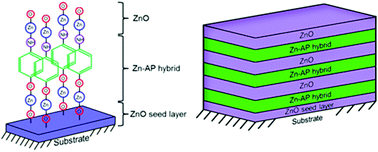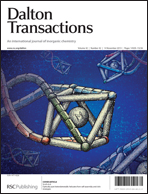Building 2D inorganic–organic hybrids by combining inorganic and organic constituents with molecular-layer precision is an attractive approach to fabricate novel materials with a tailored combination of properties from both entities. Here we demonstrate the potential of the combined atomic and molecular layer deposition (ALD/MLD) technique for the state-of-the-art synthesis of such materials and to fabricate both homogeneous thin-film mixtures and nanolaminates of ZnO and the Zn-4-aminophenol inorganic–organic hybrid. The thin films are deposited by varying the number of precursor cycles during the depositions. Diethyl zinc and 4-aminophenol (AP) are used as precursors for the Zn–AP hybrid depositions, and diethyl zinc and water for the ZnO depositions. The characterization of the mixed Zn–AP and ZnO films reveals that crystallinity, density, surface roughness, chemical stability, hardness and contact modulus are sensitively altered by even a minor insertion of Zn–AP hybrid into the ZnO structure. Fabrication of Zn–AP + ZnO nanolaminates with different thicknesses of the Zn–AP and ZnO layers provides us with an even better way to control the hardness and contact modulus, and also to enhance the chemical stability of the films.

You have access to this article
 Please wait while we load your content...
Something went wrong. Try again?
Please wait while we load your content...
Something went wrong. Try again?


 Please wait while we load your content...
Please wait while we load your content...